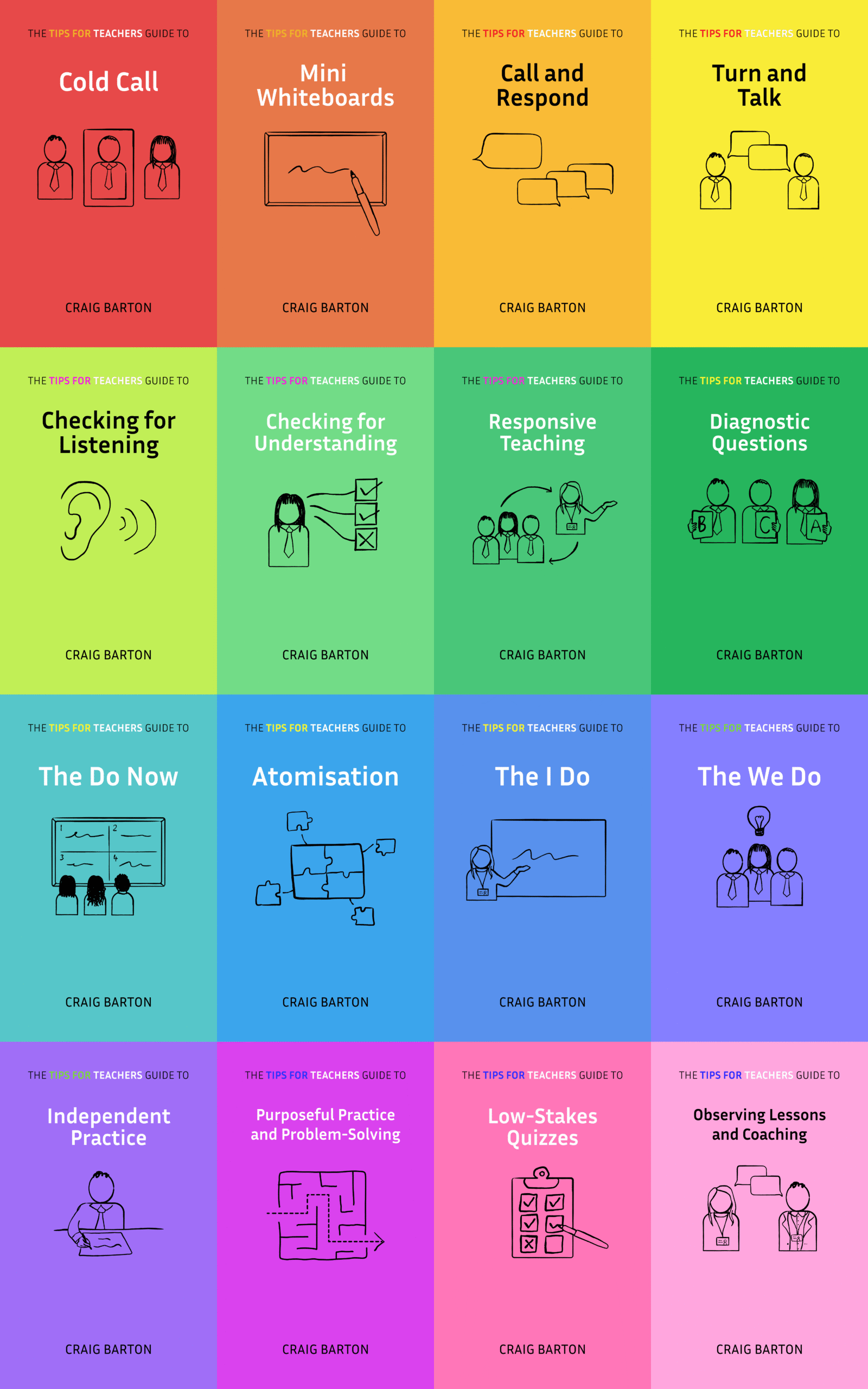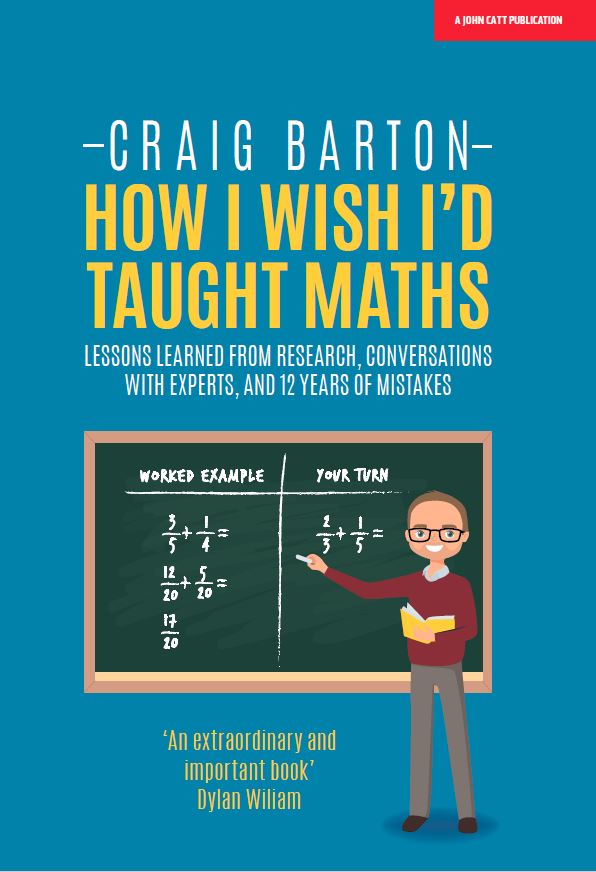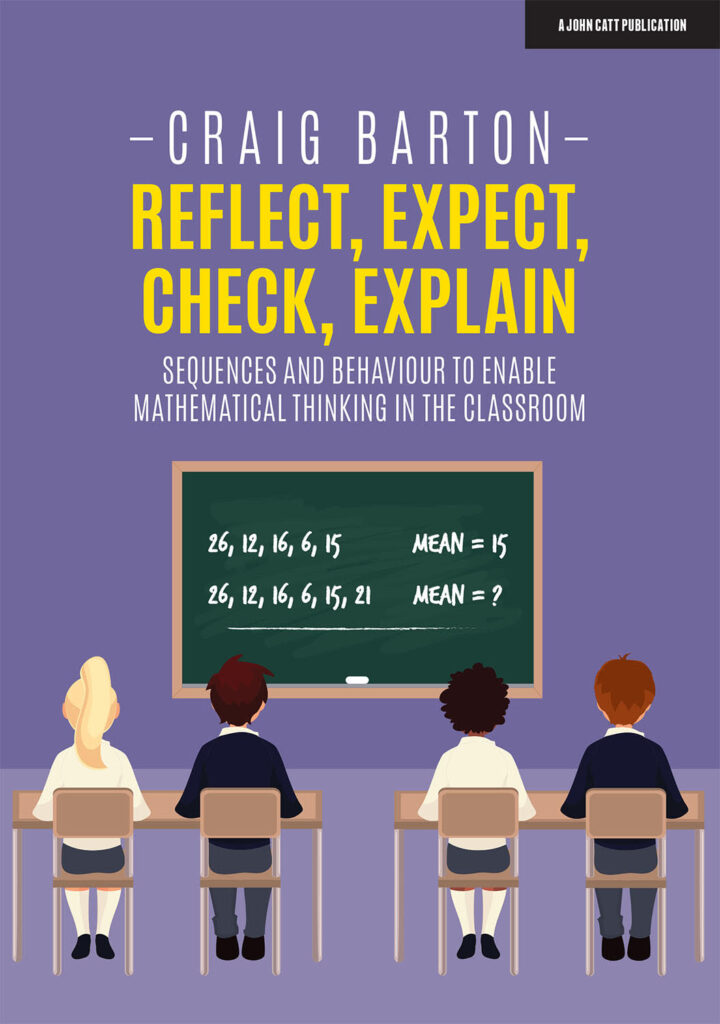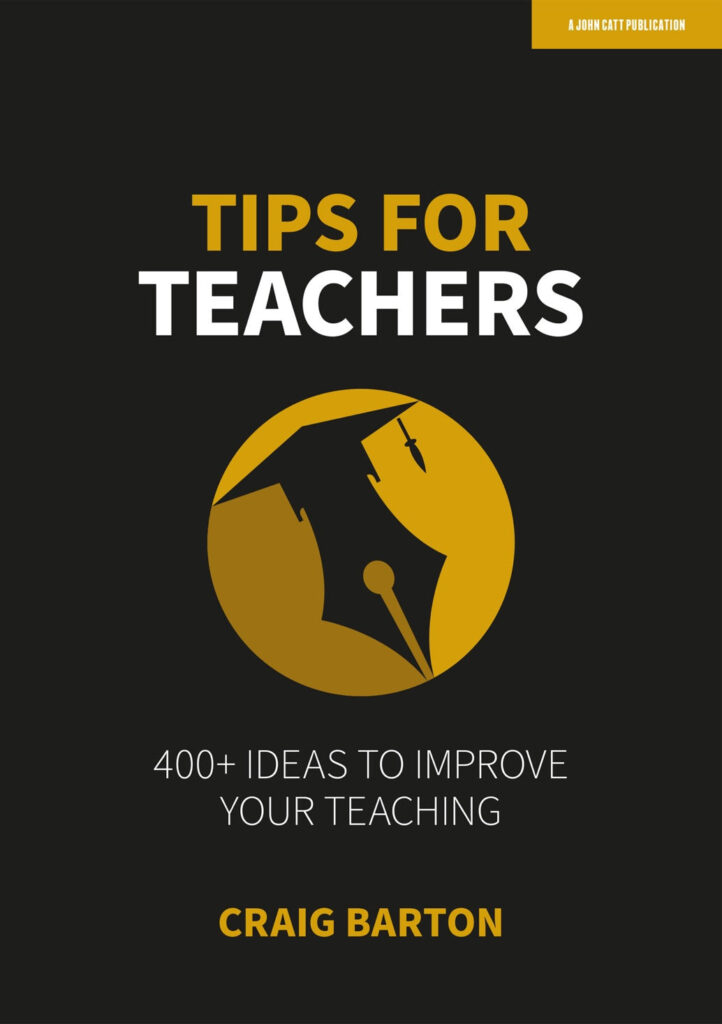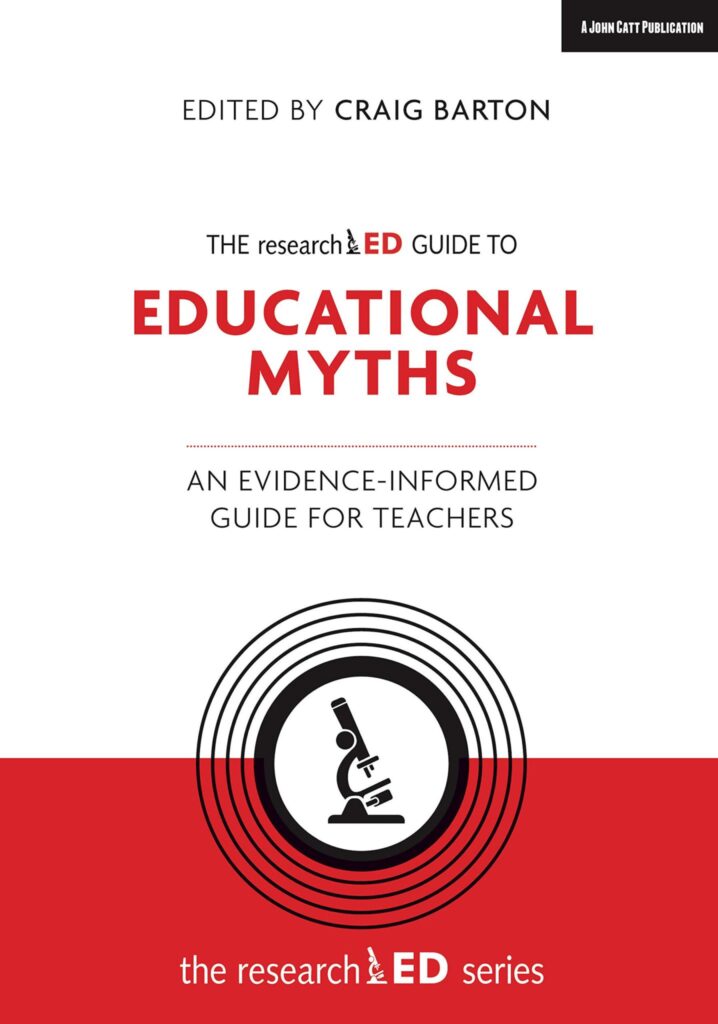
- Title: Learning from Errors
- Authors: Janet Metcalfe
- Access the original paper here
- Listen to a deep-dive podcast:
Paper summary
This source is a psychological review article discussing the benefits of learning from errors, arguing against the common educational practice of emphasizing error avoidance. Experimental evidence is presented suggesting that making mistakes followed by corrective feedback can significantly enhance learning and memory, particularly when individuals are confident in their incorrect responses. The article explores various theories explaining this phenomenon, including the role of surprise, semantic relatedness of errors, and attention to feedback. Furthermore, it highlights secondary advantages of error tolerance, such as promoting active engagement and providing valuable insights for teachers, and notes potential exceptions like amnesic patients.
If teachers are to remember one thing from this study, it should be…
Allowing and engaging with errors during the learning process, followed by comprehensive corrective feedback, is not detrimental but is actually beneficial for student learning
***Paper Deep Dive***
Define any technical terms used in the paper
Based on the sources provided, here are definitions and explanations for technical terms used in the paper:
Testing effect: The finding that taking a memory test on material improves long-term retention of that material. It is related to the benefits of active generation and error generation.
After-action review (AAR): An army training method where units analyze every misstep after an action in a nonjudgmental session with a facilitator to identify how to correct deficiencies, sustain strengths, and improve performance. More is learned from defeat than victory through this process, as long as trainees analyze their mistakes and plan remedies. It is also sometimes termed “hotwashing”.
Corrective feedback: Information provided after an error that gives the correct answer. It is crucial for learning from errors and can also include analysis of the reasoning behind the mistake.
Elaborative feedback: A type of feedback that is extensive and provides opportunity for exploring and deeply analyzing the principles underlying problems, answers, and reasoning, helping students understand underlying constructs and generalize to new situations.
Error avoidance: A learning strategy focused on preventing learners from making mistakes. Older learning theories suggested this was beneficial, but laboratory studies suggest it may be counterproductive for neurologically typical students.
Error management training (EMT): A training implementation, often used in software training, where participants are explicitly encouraged to make errors during training and learn from them. It includes instructions emphasizing the positive informational feedback of errors for learning.
Error-related negativity (ERN): An event-related brain potential (ERP) produced when individuals make and recognize simple motor mistakes, which has been thought to be a marker of unpleasant emotion. Its relation to cognitive errors is not clear.
Errorful learning: Learning processes that involve making errors. Experimental investigations suggest that errorful learning followed by corrective feedback is beneficial for learning.
Event-related brain potential (ERP): Measurements of electrical brain activity time-locked to a specific event, used in studies of error detection and correction.
Event-related functional magnetic resonance imaging (fMRI): A neuroimaging technique that detects changes in blood flow to measure brain activity. It has been used to examine brain areas activated during error correction.
Feedback: Corrective information provided after a response. It is crucial for learning from errors, and for it to be beneficial, it must provide the correct answer and be attended to.
Formative assessment: Any assessment that could be used by teachers to focus instruction. Errors provide information to teachers about areas where students are struggling.
Generation effect: The finding that actively generating responses, as opposed to passive study, produces large beneficial effects on learning.
Generative engagement: Active, exploratory participation by students in the learning process, which may involve generating errors. This active generation is beneficial to memory for correct responses.
Hypercorrection effect: The finding that errors committed with high confidence are corrected more readily than low-confidence errors. This effect is counter to some traditional theories of memory and may be explained by surprise/increased attention and semantic knowledge.
Implicit theories of intelligence: A framework suggesting people hold different beliefs about intelligence malleability. Incremental theorists believe intelligence is malleable and view errors as learning opportunities. Entity theorists believe intelligence is fixed and view errors as a sign of deficient intelligence, seeking to avoid them.
Latent semantic analysis (LSA): A computational method indicating that the similarity between correct answers and generated errors is higher for high-confidence errors than low-confidence errors.
Lexical representations: Mental storage of information about words. The hypercorrection effect has been extended to the correction of errors in these representations.
Low-stakes learning situations: Environments, such as practice sessions or initial learning phases, where the consequences of making errors are not severe. The study suggests it can be beneficial to allow errors in these situations.
Mediation: An explanation for why errors enhance learning, suggesting that erroneous responses (if related to the target) might serve as stepping-stones or cues that help a person retrieve the correct answer.
Metacognitive benefit: Improvement in the ability to monitor and control one’s own learning. Considering errors can help train subjective confidence and offset overconfidence.
Method of vanishing cues (MVC): A procedure developed to teach amnesic patients definitions of words in an errorless manner by gradually reducing cues until the word could be produced correctly.
Overconfidence: A pervasive tendency for people to believe they know things better than they actually do. It can negatively affect learning and performance by influencing study choices and test-taking behavior.
P3a: An event-related brain potential (ERP) component associated with surprise reactions and attention. It is larger for feedback given to high-confidence errors.
Prediction error: The discrepancy between a person’s expectation and the actual outcome. Neural models suggest learning occurs when expectations are violated, and the magnitude of the prediction error influences the extent of learning.
Proactive interference: When previously learned information interferes with the ability to learn or remember new information. Errorless learning methods were developed for amnesic patients based on the assumption that errors produce significant proactive interference.
Recursive reminding: A theory suggesting that remembering the episodic context in which an error was made and corrected helps facilitate memory for the correct answer. It relies on episodic memory.
Refutation texts: Educational texts that explicitly state and then discuss and refute common misconceptions. These have been found to lead to hypercorrection of misconceptions held with high confidence.
Regulatory focus: A motivational theory suggesting individuals are primarily focused on either prevention (safety, security, avoiding mistakes) or promotion (advancement, achievement, pursuing gains). This focus can influence sensitivity to errors.
Reconsolidation: A framework suggesting that an undesirable memory or response needs to be reactivated to be modified. This framework is seen as similar to the idea that errors need to be retrieved to be corrected.
Scaffolded feedback: A type of feedback that provides support to help learners understand and integrate information, increasing its beneficial effects.
Semantically related: When an incorrect response has a meaningful connection to the correct answer. Errors need to be somewhat informed or related to the target to be beneficial for later recall of the correct answer.
Stereotype threat: The risk of confirming negative stereotypes about one’s group, which can cause stress and anxiety and affect performance. Minority students may be particularly vulnerable to the emotional consequences of errors due to this.
Subjective confidence: A person’s rating or feeling about the likelihood that their response is correct. It is often subject to overconfidence.
What does this paper add to the current field of research?
Based on the provided sources, this paper significantly contributes to the current field of research by challenging the long-held belief that errors are detrimental to learning and should be strictly avoided. It presents a comprehensive review of behavioral and neurological evidence suggesting that, for neurologically typical students, allowing and actively engaging with errors, when followed by appropriate corrective feedback, is actually beneficial and enhances learning.
Here’s what the paper adds:
- Empirical Evidence for the Benefits of Errorful Learning: Contrary to traditional theories that suggested errors entrench incorrect responses, the paper compiles evidence from laboratory studies demonstrating that generating errors before receiving the correct answer leads to better memory for the correct response than error-free learning conditions. This effect is observed when the generated errors are somewhat related to the target response.
- Characterizing the Hypercorrection Effect: A key contribution is the extensive discussion of the hypercorrection effect, the finding that errors committed with high confidence are corrected more readily than those made with low confidence. This phenomenon is counterintuitive based on theories suggesting strong, high-confidence responses should be resistant to change. The paper reviews research exploring potential explanations, including the role of surprise and increased attention associated with being wrong when confident, and the semantic relatedness of high-confidence errors to the correct answers. Neuroimaging data (ERP, fMRI) supporting the surprise/attention mechanism are presented.
- Highlighting the Crucial Role of Feedback: The paper underscores that simply making an error is not enough; corrective feedback is essential for learning from errors. It emphasizes that effective feedback must provide the correct answer and be attended to by the learner. It also notes that elaborative or scaffolded feedback is more beneficial.
- Exploring Theoretical Mechanisms: The paper reviews several theories proposed to explain why errors enhance learning, including Mediation, Recursive Reminding, Reconsolidation, and Prediction Error. It evaluates how well these theories account for the observed phenomena, particularly the hypercorrection effect, noting where current evidence fits or presents challenges.
- Discussing Exceptions and Boundary Conditions: By examining cases like amnesic patients, who benefit from errorless learning, and older adults, who show a different hypercorrection pattern, the paper provides insights into the underlying memory systems (e.g., episodic memory) and cognitive processes involved in learning from errors.
- Identifying Secondary Benefits and Practical Implications: The paper highlights the broader advantages of an error-tolerant approach in educational settings. These include promoting active generation and engagement in students, providing teachers with valuable formative assessment information about student difficulties, and helping students develop better metacognitive skills by training subjective confidence and offsetting the tendency toward overconfidence. It also points to successful implementations in other domains, such as the military’s After-Action Review (AAR) and Error Management Training (EMT).
- Addressing Emotional Concerns: The paper reviews research on the emotional consequences of errors, suggesting that while they exist, particularly when stakes are high or for certain personality types, these are often exaggerated in low-stakes learning scenarios and can be mitigated through sensitive handling and methods like EMT instructions that frame errors as learning opportunities.
In essence, the paper moves beyond simply demonstrating that errors aren’t always bad, to exploring when and why errors can be beneficial for learning, characterizing key phenomena like the hypercorrection effect, investigating the underlying cognitive and neural mechanisms, and discussing the practical implications for improving teaching and learning strategies. It presents a strong case for shifting pedagogical approaches from error avoidance to error engagement in low-stakes environments.
What are the characteristics of the participants in the study?
Based on the provided sources, studies investigating learning from errors have involved participants with various characteristics, primarily focusing on neurologically typical individuals but also examining exceptions and other groups:
- Neurologically Typical Students/Individuals/People: A large body of research, including many laboratory studies, has focused on neurologically typical students or individuals, demonstrating that for this group, generating errors followed by corrective feedback is beneficial to learning. This contradicts traditional views favoring error avoidance, especially for this population.
- Children: Studies have included children, specifically mentioning those in grades 3 to 5. Research indicates children also show familiarity effects in hypercorrection and can benefit from exploring the reasoning behind correct answers. While they benefit from feedback, the optimal timing (immediate vs. delayed) might differ from adults. Like young adults, children show a hypercorrection effect for high confidence errors.
- Young Adults: This group is frequently studied, particularly in research on the hypercorrection effect. Young adults show a robust hypercorrection effect, meaning they are more likely to correct high-confidence errors than low-confidence errors. Studies with young adults using ERP and fMRI have linked this effect to surprise and increased attention directed at feedback for high-confidence errors. They also show a greater semantic similarity between their high-confidence errors and the correct answers. They tend to claim “knew it all along” more often for corrected high-confidence errors and are closer to the correct answer in subsequent guesses.
- Older Adults: Older adults present a different pattern regarding the hypercorrection effect compared to young adults. While they benefit from making errors, they correct high-confidence errors only slightly more than low-confidence errors. This reduced hypercorrection effect may be related to them showing a larger attention-related P3a response to their low-confidence errors than young adults. They might also have greater preexperimental familiarity with the corrections for low-confidence errors.
- Amnesic Patients: Individuals with severe amnesia are a significant exception. Contrary to the findings for neurologically typical individuals, amnesic patients are harmed by error generation and benefit more from errorless learning procedures, such as the method of vanishing cues. This difference highlights the potential role of intact explicit or episodic memory systems in benefiting from errors.
- Novice Trainees (Military): While not a typical laboratory study group, the paper mentions the use of After-Action Reviews (AAR) in the American armed forces with novice trainees as an example of a method that explicitly engages with errors to improve learning.
- Pigeons: Early foundational studies on errorless learning were conducted using pigeons in discrimination learning tasks. While these studies influenced the idea that errorless learning is beneficial, the observed results in pigeons did not uniformly support this conclusion and even showed some advantages for errorful learning conditions.
In summary, the research primarily focuses on neurologically typical participants across different age groups (children, young adults, older adults) to understand how errors affect learning, while also examining specific populations like amnesics as exceptions and drawing examples from applied settings like military training.
What are the key implications for teachers in the classroom?
Based on the sources and our conversation, here are the key implications for teachers in the classroom:
- Challenge the traditional view that errors must be avoided at all costs. American classrooms have often operated under the assumption that errors should be avoided or ignored, influenced by theories suggesting errors entrench incorrect responses. However, research shows that this can be a counterproductive strategy, at least for neurologically typical students.
- Actively allow and even encourage students to make errors in low-stakes learning situations. Generating errors before receiving the correct answer, when followed by corrective feedback, is beneficial and enhances learning. This approach fosters active, exploratory, and generative engagement, which is highly beneficial to memory.
- Provide crucial and effective corrective feedback. Simply telling students they are wrong is not enough; feedback must provide the correct answer and ensure students attend to it.
- Make feedback elaborative and engaging. The beneficial effects of feedback are increased when it is elaborative or scaffolded. Encourage students to analyze the reasoning behind both their errors and the correct answers. For example, asking students to explain “how you think I knew that” after providing corrective feedback is particularly effective in focusing their attention on the correct reasoning.
- Understand that students’ errors provide valuable formative assessment information. When students are allowed to generate errors, their mistakes highlight areas of difficulty and offer insights into their thinking processes. Teachers can use this information to focus instruction and clarify difficult concepts.
- Recognize that allowing error generation can help students develop better metacognitive skills. Encouraging students to consider how they might be wrong helps train their subjective confidence and can counteract the pervasive tendency toward overconfidence, which can negatively impact study choices and test performance.
- Handle errors sensitively and frame them as opportunities for learning. While there can be emotional consequences to making errors, particularly when stakes are high, these effects may be exaggerated in low-stakes learning scenarios. Teachers should avoid gratuitous punishments and can use methods like Error Management Training (EMT) instructions that explicitly encourage errors during training and emphasize their positive informational value. Adopting an “incremental mindset,” which views errors as chances to learn, can also be beneficial and can be fostered by teachers.
- Focus this approach on low-stakes practice and preparation, not high-stakes performance situations. The goal is to optimize performance in situations that count by allowing errors during the learning and practice phase.
- Be aware of exceptions. The benefits of learning from errors, particularly the hypercorrection effect, are primarily demonstrated for neurologically typical students across different age groups. Amnesic patients, for example, benefit more from errorless learning procedures. Older adults may also show a different pattern in correcting high-confidence errors compared to young adults.
In summary, the research supports a shift in pedagogical focus from avoiding errors to strategically integrating error generation and high-quality corrective feedback into the learning process, creating a classroom environment where mistakes are seen as valuable steps toward deeper understanding.
Why might teachers exercise caution before applying these findings in their classroom?
Based on the provided sources and our conversation, while the research strongly suggests benefits to learning from errors under certain conditions, teachers should exercise caution before universally applying these findings in their classroom for several key reasons:
- The Benefits Are Primarily for Neurologically Typical Students: The research highlighting the benefits of errorful learning primarily applies to neurologically typical students. Individuals with specific neurological deficits, such as amnesic patients, are actually harmed by error generation and benefit more from errorless learning procedures. While amnesics are an extreme case, this highlights that the approach is not universally beneficial across all cognitive profiles.
- Specific Conditions for Benefit: Learning from errors is not effective under all circumstances; it requires specific conditions.
- Crucial Role of Feedback: Simply making an error is insufficient; effective corrective feedback is crucial. The feedback must provide the correct answer and ensure students attend to it. Elaborative or scaffolded feedback is more beneficial. In environments where prompt, high-quality feedback is not consistently provided, allowing errors might not yield benefits or could even be detrimental.
- Errors Must Be “Informed”: The research indicates that the generated error needs to be somewhat related to the correct response to be beneficial. Random guesses when students have “absolutely no idea” don’t show the same effect.
- Source of the Error Matters: The benefits are demonstrated for self-generated errors. Being exposed to incorrect information presented externally (e.g., by the teacher or potentially another student) can sometimes be harmful. The impact of students observing each other’s errors followed by feedback is an open question that research has not yet addressed.
- Potential Negative Emotional Consequences: While the emotional consequences in low-stakes practice might be exaggerated compared to high-stakes errors (like medical mistakes), errors can still evoke negative emotions.
- This responsivity varies based on personality. Individuals who are “prevention-focused” are concerned with avoiding mistakes, and “entity theorists” (who believe intelligence is fixed) may view errors as evidence of low intelligence and avoid them.
- Teachers need to handle errors sensitively and avoid gratuitous punishments (verbal or otherwise). Implementing strategies like Error Management Training (EMT), which explicitly frames errors as learning opportunities, or fostering an “incremental mindset” is necessary to buffer these potential negative effects. Simply allowing errors without managing the emotional and motivational context could be counterproductive for some students.
- Different Effects for Different Age Groups: While children and young adults show similar patterns like the hypercorrection effect, older adults exhibit a different pattern in correcting high-confidence errors. This suggests that the optimal application might need to be tailored to the specific age group.
- The Approach Requires a Shift in Pedagogical Style: American classrooms have traditionally emphasized avoiding errors, with teachers often ignoring or disregarding incorrect responses. A shift to allowing and engaging with errors requires significant changes, including in-depth discussion of the reasons behind both correct and incorrect answers, which may require different skills and more time.
- Applicability is Best in Low-Stakes Situations: The framework presented is about using errors during “initial learning and during practice and preparation” for a test that counts, not allowing errors in “situations that counts” where consequences are severe. Teachers must distinguish between practice environments and evaluative ones.
In summary, while the research offers a powerful argument against strict error avoidance, successful implementation in the classroom requires careful consideration of student population, the quality and nature of feedback, the type of errors encouraged, the emotional climate created around mistakes, and the stage of learning.
What is a single quote that summarises the key findings from the paper?
The behavioral and neurological data reviewed here indicate that, as long as one is not amnesic, making errors can greatly facilitate new learning
